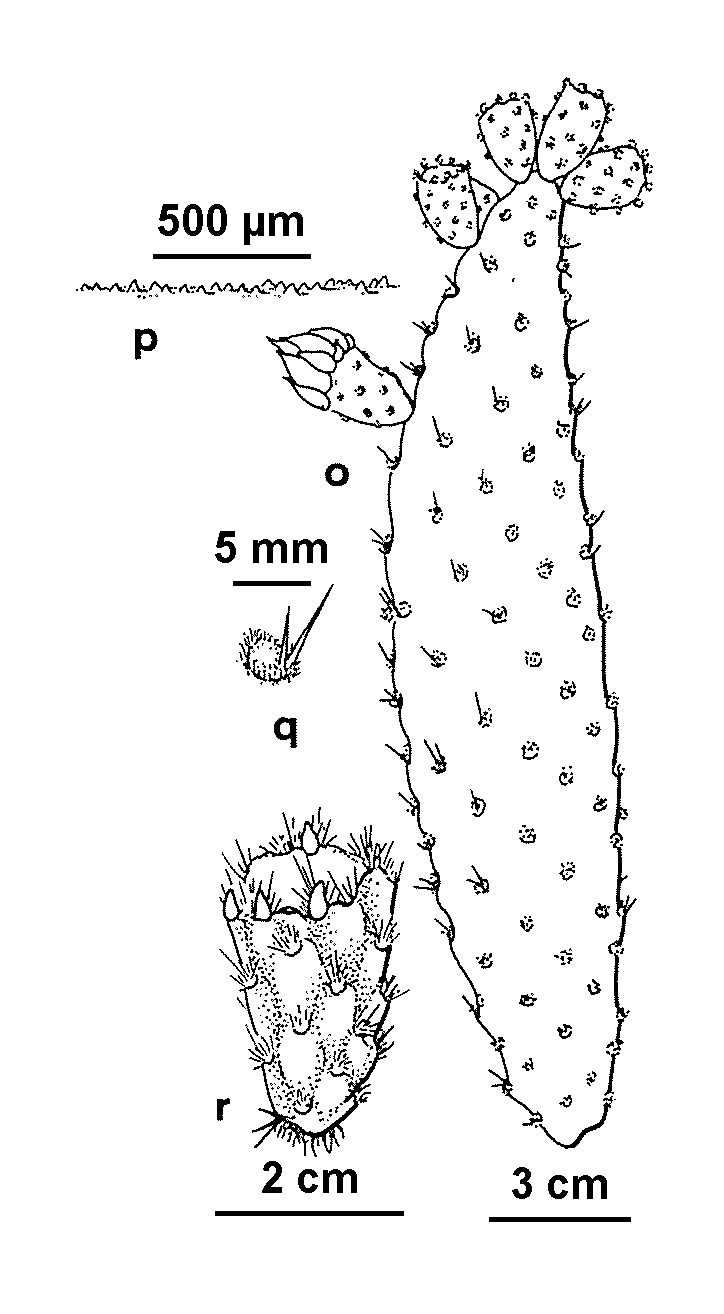Opuntia leoglossa
Font & M.Köhler Lion's TongueErect shrub, 0.7–1.8 m high, trunk often well-developed, to c. 1 m high. Terminal cladodes compressed, relatively thin (5–8 mm through), narrowly linear-elliptic or oblong, 20–35 cm long, 3.5–6 cm wide, dull green, minutely papillate (papillae to 0.1 mm long); areoles 45–70 per cladode face, close-set, c. 7–20 mm apart, filled with pale brown and white wool and yellowish-brown glochids; spines 1–3 per areole, straight, rigid, 4–10 mm long, 0.5–0.7 mm wide near base, spreading, yellow, rather sparse, some segments lacking spines. Flowers 4–5 cm diam.; sepaloids pink-tinged (flesh-coloured); petaloids spreading, yellow; stamens yellow; style white or creamish white, stigmas green; hypanthium spineless, slightly tuberculate, remaining green. Fruit sterile, 2.5–3.5 cm long, 1.5 cm diam., more or less tuberculate. Flowers late spring–summer.
CVU. Also naturalised in WA, SA, NSW, ACT. Sparingly established from garden-derived plants on roadsides at South Morang and Greta West, and along a rail-line near Prahran and beside Merri Creek at Clifton Hill.
Kohler and Font (2021) have found that the name Opuntia schickendanztii has been consistently and long misapplied to plants known as the “Lion’s Tongue”. The authors have shown that the “Lion’s Tongue” taxon is unrelated to the naturally occuring populations of Opuntia schickendanztii s.s. in Argentina and Bolivia, the latter taxon which the authors have transferred to Salmonopuntia (Kohler et al. 2021). The “Lion’s Tongue” taxon is known only from horticulture and from naturalised populations in Australia and Spain. The authors were unable to find any published names that could be applied to the “Lions Tongue” and have consequently described the taxon as a new species, Opuntia leoglossa Font & M.Köhler. The authors consider the possibility that O. leoglossa is of hybrid origin.
 Spinning
SpinningMisapplications
Köhler, M.; Font, F. (2021). Opuntia leoglossa sp. nov. (Cactaceae): a new identity for the aloctone “Lion’s Tongue” cactus. Phytotaxa 500(3): 281–287.
Köhler, M. Font, F., Puente-Martinez, R.,; Majure, L.C. (2021). “That’s Opuntia, that was!”, again: a new combination for an old and enigmatic Opuntia s.l. (Cactaceae). Phytotaxa 500(3): 262–274.


